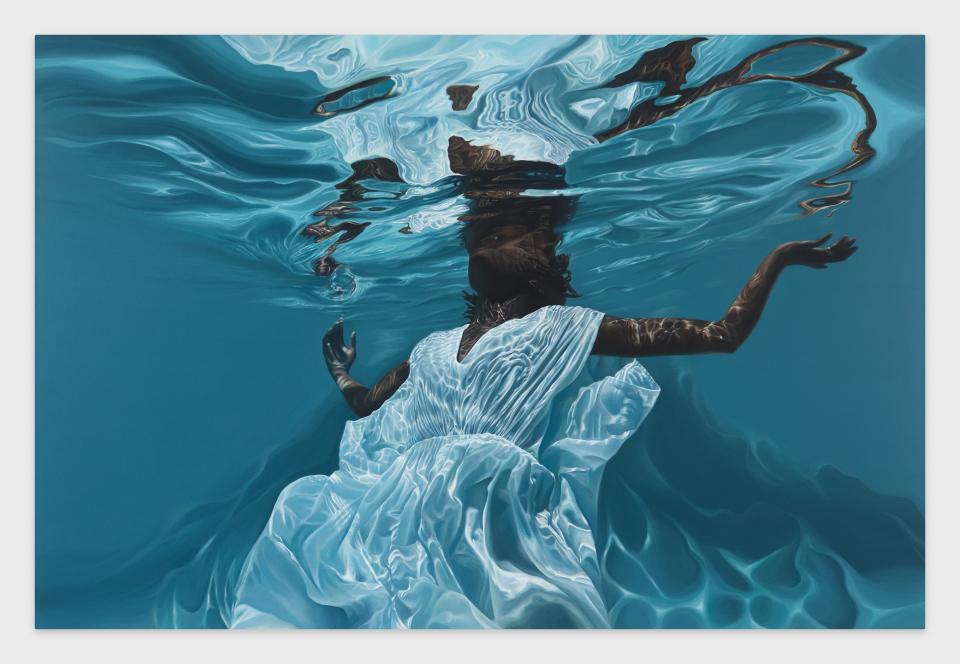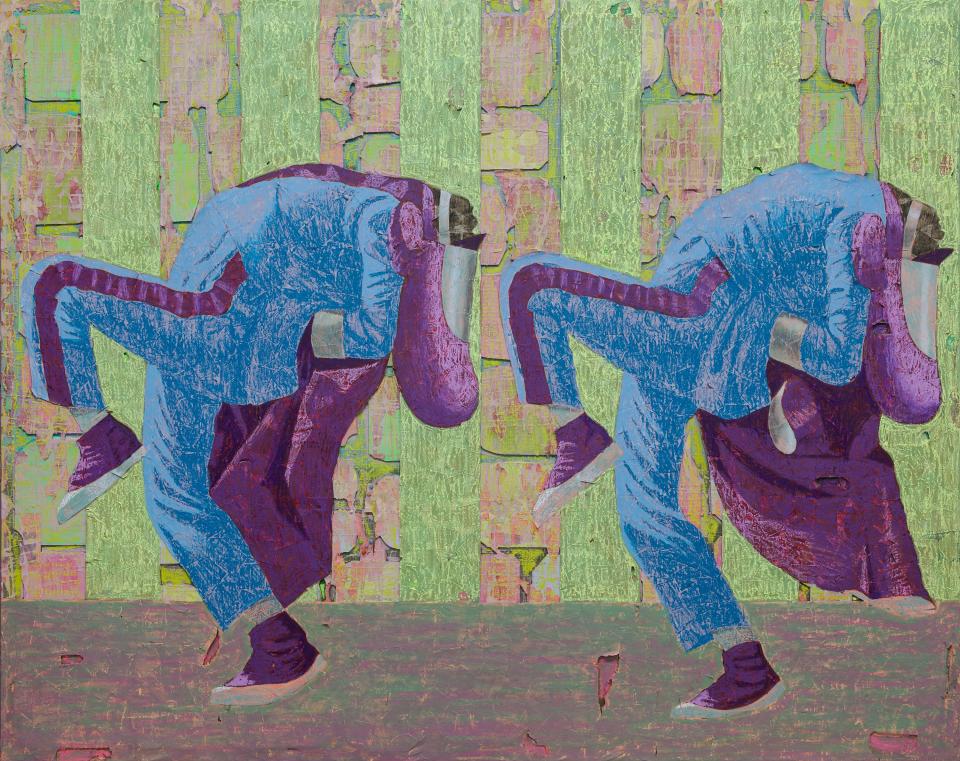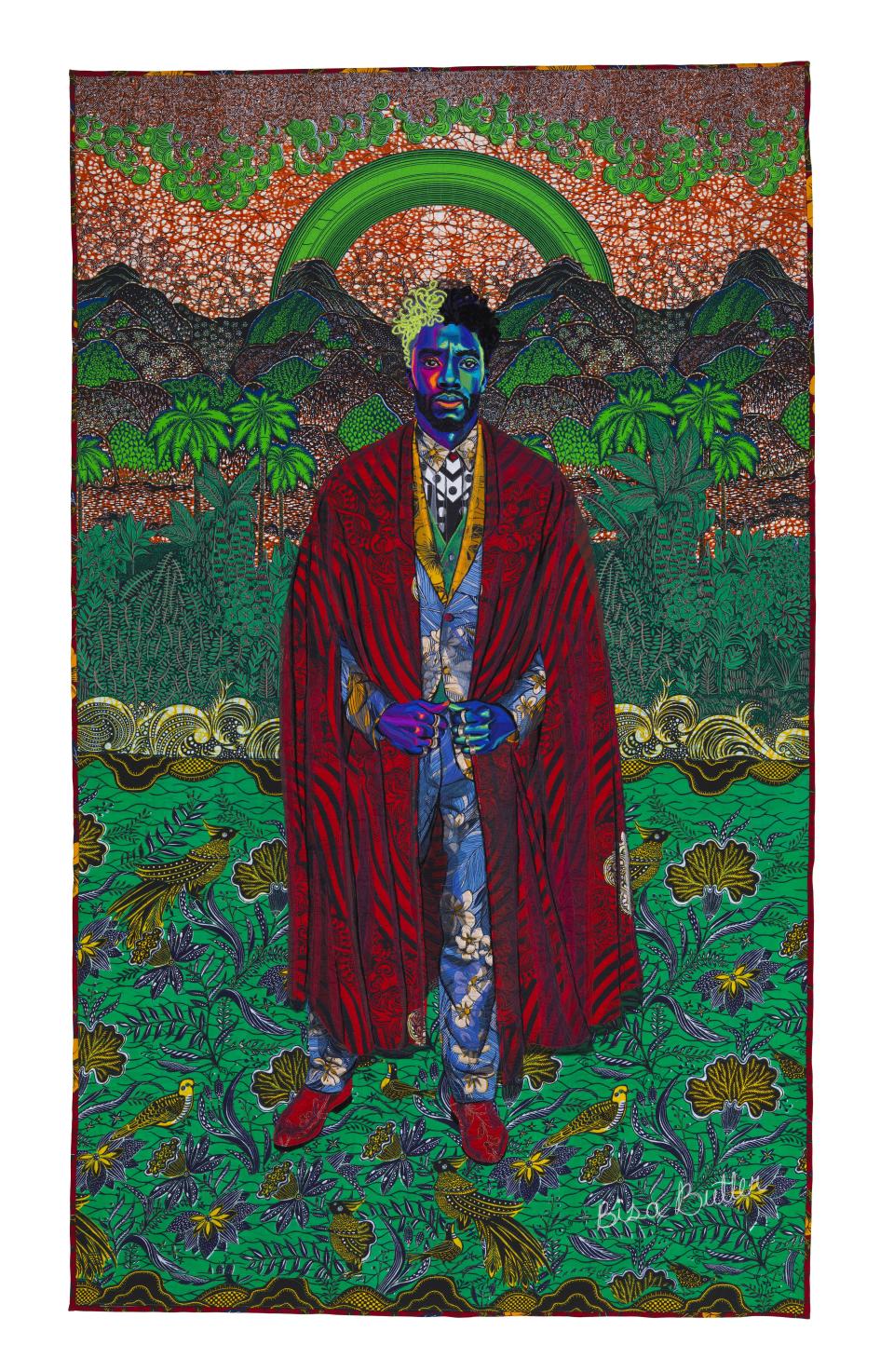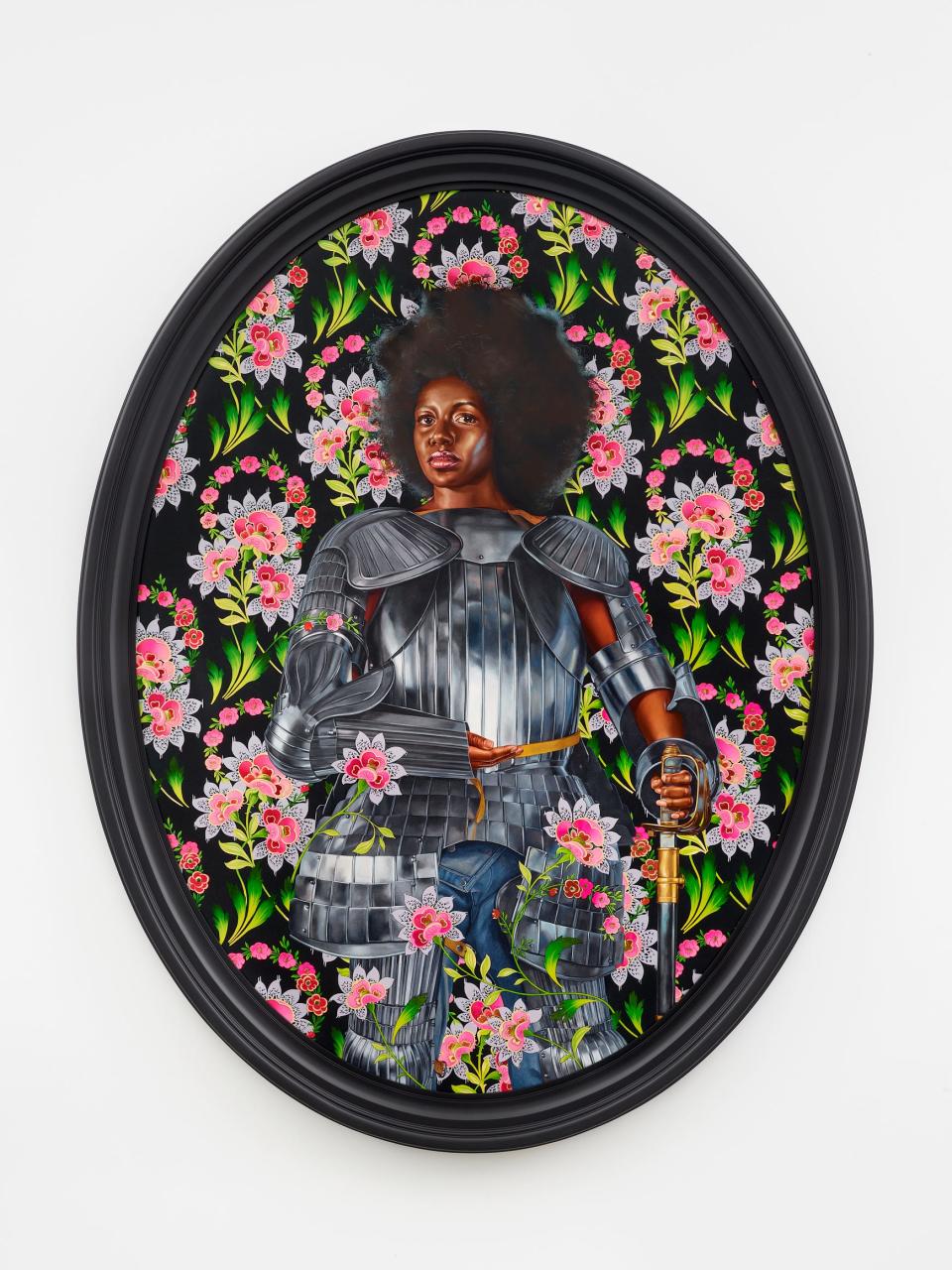Brooks Museum to host 'Black American Portraits' exhibit. Here's a sneak peek.
- Oops!Something went wrong.Please try again later.
A sequence of teardrops is suspended from the late NBA superstar's left eye in "Shattered Dreams," an expressive memorial to Kobe Bryant painted in 2020 with oils and glow-in-the-dark acrylic by Fulton Leroy Washington, a Louisiana-born artist.
A basketball appears suspended within each teardrop, the bottommost of which appears to have landed within the outstretched hands of a miniaturized representation of Bryant, in his Los Angeles Lakers uniform. In this manner the surreal portrait celebrates Bryant's achievements as one of the world's great ball players even as it mourns his death in a January 2020 helicopter crash.
From Aug. 17 to Jan. 7, "Shattered Dreams" can be found at the Memphis Brooks Museum of Art in a show titled "Black American Portraits," presented by Bank of America. Featuring 129 works, including paintings, photographs, textiles, sculptures, videos and more, ranging from monumental canvases to tiny tintypes, the exhibition amplifies the achievement of Washington's painting by emphasizing the joy and love of the Black American experience over the pain and trauma that is reproduced so often in news reports and on social media.

"Black American Portraits" was developed at the prestigious Los Angeles County Museum of Art in 2020, at a time when "all the images we were seeing of Black people in the media were about pain and trauma," Zoe Kahr, Brooks executive director, said Wednesday during a media preview of the exhibition at the Overton Park museum.
Thanks to social media, "the instantaneous of images of Black death" had become a new reality in America, added Efe Igor Coleman, the Blackmon Perry Curatorial Fellow in African American Art and Art of the African Diaspora at the Brooks.
To counter the despair generated by such content, the organizers of "Black American Portraits" wanted "to celebrate Black joy and abundance" with some 200 years worth of Black portraiture, chronicling "who we are and who we've been," Coleman said. To this end, the exhibition at the Brooks is presented in thematic galleries, devoted to "Power," "Joy" and "Love."
"It felt very important to have this here," said Kahr, pointing out that Memphis has become America's largest majority-Black city, according to the most recent Census data. "We are the city's museum, and we want to be deeply connected to and embedded in the community." (Brooks boosters hope this connection will become even stronger in 2025, when it moves to an ambitious new $180 million building scheduled to be constructed Downtown.)

With works from the Brooks, Memphis collectors and a sculpture borrowed from the Dixon Gallery & Gardens adding a Memphicentric touch to the show's original contents, "Black American Portraits" spotlights "the many ways in which Black Americans have used portraiture to envision themselves in their own eyes" by reframing "the history of portraiture to center Black American subjects, sitters and spaces," according to a Brooks press release.
Chronologically, the show — which sprawls among most of the galleries of the museum's lower level — begins with a portrait of a Black sailor by an unknown artist from about 1800; touches upon the Harlem Renaissance and the Black Arts Movement of the 1960s and '70s; and ends with work by contemporary artists, including some from Memphis, such as painter Jarvis Boyland and photographer Catherine Elizabeth Patton.

Also represented are influential Memphis photographers of the past, including Ernest Withers and the Hooks Brothers; their photos in the show depict the famous (Tina Turner, Al Green) and non-famous (high school band members, married couples) alike.
Appearing more than once is Frederick Douglass, the abolitionist and orator who was the most photographed man in America in the 19th century, according to Patricia Daigle, Associate Curator of Modern and Contemporary Art at the Brooks. She said Douglass understood the power of "representation and controlling your own image"; he insisted on appearing "dignified and cultured, to counteract the plethora of negative images" of Black people.
MEMPHIS MUSEUMS: How Memphis Brooks Museum of Art plans to transform into 'epicenter of Black art'
Surrounded by walls of artistically rendered faces in the "Power" gallery, Daigle said the show itself is liable to be empowering for many visitors, many of whom will never have seen "this many portraits of Black people in one space, at one time," in a museum setting.

While many of the paintings are intellectual exercises as well as stylistic triumphs that probe and challenge conventional definitions and narratives of race, Coleman said some of her favorite works capture the "exuberance" of everyday life. Through the expressiveness of the artist, these works argue that picnics, high school marching band performances and church bazaars can be as worthy of attention as the activities of Jackie Robinson, Chadwick Boseman and Barack Obama (to cite some of those represented by artwork in the exhibition).
Coleman has a memorable phrase for this achievement. She calls it "shedding light on the extraordinary ordinary."
For more information on the museum and the show, visit brooksmuseum.org.
This article originally appeared on Memphis Commercial Appeal: Memphis Brooks Museum of Art to host Black American Portraits exhibit

